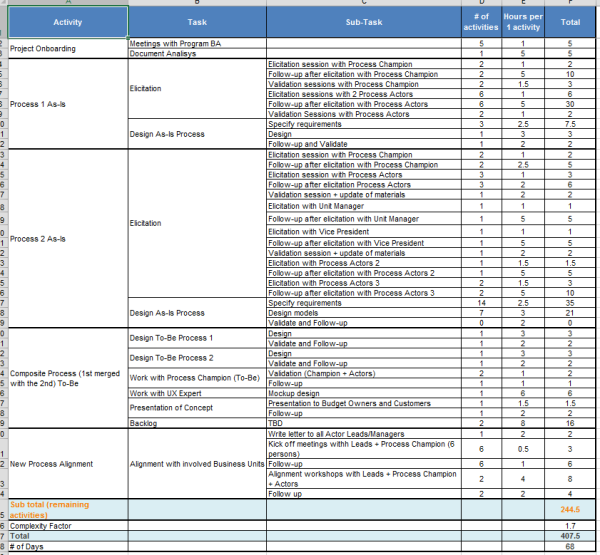Want CCBA label at your name? It’s easy! It is time consuming, it is nervous, it takes efforts but it is easy, nothing outstanding. It took me 1 year of preparations to become certified and now I want to share experience with those who are striving for such achievement.
Become your own trainer. Develop an exam preparation plan and follow it. Schedule recurrent sessions where you will be busy with nothing but reading Body of Knowledge. Be tough to yourself – do not miss or waste time planned for preparations. Check your progress and evaluate how close you get to the goal.
Start with the theory – BABOK® Guide is the most credible and authoritative source of knowledge and practices for business analysis. Read it 10 times and more. It is your key to success. You may not practice some tasks or techniques, you may not agree with what BABOK says, you may perform it differently at your job but the truth is CCBA exam is based completely on theory provided within the Guide. Study it carefully. Even though exam is based on the BABOK® Guide, remember that it is not the sole source of questions on the exam.
Order some exam simulations to know at least nearly what to be ready for or to test your readiness. Yes it is payment from your own pocket but believe me it will raise your chances dramatically. I bought 2 months of CCBA exam simulation by Watermark (it is not an advertisement) that allowed me to check every knowledge area and techniques. It also provided me with the real 3,5 hours exam experience which is priceless.
Ask certified guy for help. It will not make your life easier but at least you will do the right things. Real exam experience will serve as a beacon.
In case you tried simulations you may understand that it is hard just physically to complete exam. Think about 3,5 hours with 150 questions, imagine stress and thirst. I suggest splitting whole time into 3 sets containing 50 questions each. Make a break between sets to catch a breeze of fresh air and to compose your self. This time is also useful to analyse how you are going through the exam and to take corrective actions.
Someone told me to study books that help you in passing the exam (so called Study Guides). I never read one and cannot suggest on it but several guys received their certificate after such additional reading. Actually, several did not as well.
Do not forget about practice. It is quite easy to collect 3750 hours of work experience which may not help you in passing the exam. In case you really wear BA hat regularly you may understand and study what BABOK says much more easier. Try get involved in a project where you may master your BA skills to try everything you learn in real life.
Knowledge areas, tasks, inputs, outputs, task description and elements, stakeholders, techniques per task, techniques in general, underlying competencies, glossary and even general BABOK knowledge… Want CCBA label at your name? Do you best to memorize all this stuff.




